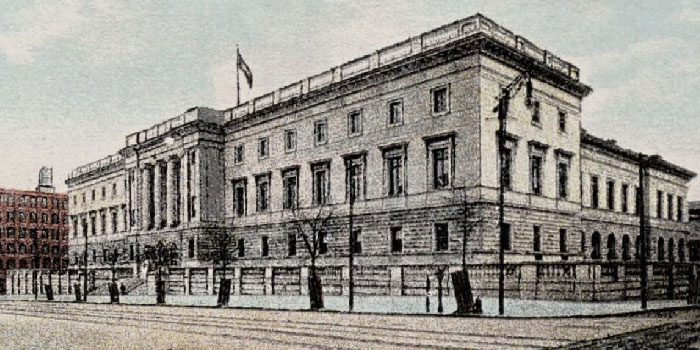
By Bullion Shark LLC ……
The United States Mint has served the American people for 228 years. It produces circulating coins, bullion coins, numismatic coins, and official medals. It is the nation’s sole manufacturer of legal tender coinage and the world’s largest coining facility with branch mints operating today in Philadelphia, Denver, San Francisco, and West Point.
The coins that the U.S. Mint issues are critical to the facilitation of commerce, and historically these coins have served as the backing of the American banking system. In addition, our coinage reflects our shared history and ideals and the legacy of our nation.
Why Was the U.S. Mint Created?
Foreign coins circulated during the colonial period, although in numbers insufficient to meet demand. Because of this the colonies sometimes ordered the striking of coins by private mints and issued their own paper money.
After the rebellion of the British American colonies, the United States adopted the Articles of Confederation, under which individual states retained the authority to issue their own money and levy their own taxes and tariffs. This led to financial stagnation for the new country and the inability of the United States government to raise money and repay the country’s war debt. After the Constitution was passed in 1788, discussion began about the need for a mint and a banking system centralized under the new federal government.
When and by Whom?

After Alexander Hamilton’s appointment as the nation’s first Treasury Secretary in 1789, he prepared a paper called “On the Establishment of a Mint” that was sent to the House of Representatives and was eventually developed into the Coinage Act of 1792 that was passed by Congress on April 2 of that year.
That law established the United States Mint in the national capital of the time (Philadelphia, Pennsylvania), and a unit of national currency (the dollar), that would be divided decimally into 100 cents.
There was some discussion of using an image of the president on the coins but this was rejected by the first president of the new federal regime, George Washington, on the principle that the republic was founded on rule by the people.
The Mint Act mandated that the obverse of each coin had to feature an image emblematic of Liberty and the reverse side an eagle. Among the most famous depictions of Liberty on 19th- and 20th-century coins were those on the Morgan dollar, the Peace dollar, the Walking Liberty half dollar, and the Saint-Gaudens double eagle gold coin. The last two designs were reprised in 1986 for the American Silver Eagle and the American Gold Eagle, respectively.
This tradition held, for the most part, through the first decades of the 20th century.
The First U.S. Coins
Washington appointed scientist David Rittenhouse to be the first Director of the Mint, and as such Rittenhouse purchased two lots at 7th and Arch Streets in Philadelphia. Here, a three-story Mint building, the very first federal building, was erected.
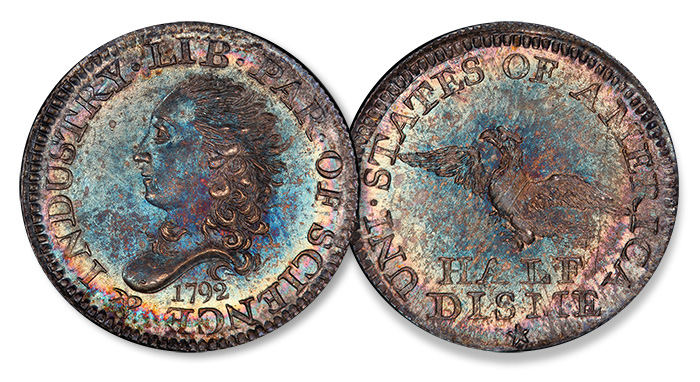 Coin production began even before the first Mint was complete. On July 13, 1792, the first coin, a silver half disme, was struck in the cellar of a nearby building. Numismatic lore has it that these first coins were struck using silverplate belonging to Martha Washington. These coins didn’t truly circulate but were given to government officials, dignitaries, and VIPs. Secretary of State Thomas Jefferson even wrote about them. The nation’s first circulation coin, the 1793 Chain cent, was delivered on March 1, 1793.
Coin production began even before the first Mint was complete. On July 13, 1792, the first coin, a silver half disme, was struck in the cellar of a nearby building. Numismatic lore has it that these first coins were struck using silverplate belonging to Martha Washington. These coins didn’t truly circulate but were given to government officials, dignitaries, and VIPs. Secretary of State Thomas Jefferson even wrote about them. The nation’s first circulation coin, the 1793 Chain cent, was delivered on March 1, 1793.
The Mint delivered its first silver half dollars and dollars in 1794, featuring the flowing hair design created by Chief Engraver Robert Scot.
In 1795, the mint delivered the nation’s first gold coins. These coins, called eagles ($10) and half eagles ($5) were also designed by Scot. The quarter eagle gold coin denomination and silver quarter dollar debuted in 1796.
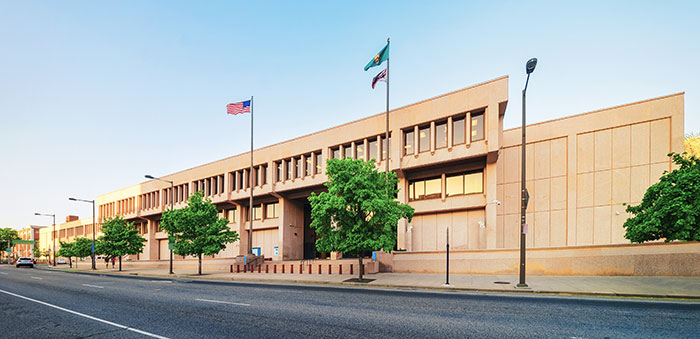
How Many United States Mints Have There Been?
Although not technically a Mint, the United States Mint’s headquarters is located in Washington, DC. The Mint moved its headquarters to the District of Columbia after the Mint’s organization was folded into the Department of the Treasury in 1873.
The Philadelphia Mint has changed locations several times, each time expanding into a larger facility. Its current facility was completed in 1969.
This mint is critical to producing circulating coins and has the ability to produce a million coins in 30 seconds. It also produces numismatic coins, commemorative coins, and medals, and it is where the Mint’s team of medallic artists and sculptors work to create the designs that appear on our coins.
Historic United States Mints
As the nation grew and silver and gold deposits were found in locations far removed from Philadelphia, Congress saw fit to construct new coin striking facilities. Each of these mints was a branch of the original mint in Philadelphia and each one was supplied coin dies created at the Philadelphia Mint engraving department.
In 1835, three southern branches were established in New Orleans, Louisiana; Charlotte, North Carolina; and Dahlonega, Georgia.
New Orleans recoined foreign silver and gold coins into the American standard and was in operation from 1838 until 1861 when coinage was suspended due to the outbreak of the American Civil War. The New Orleans Mint reopened in 1879 to assist the Mint in striking the millions of Morgan dollars legally mandated by Congress.
The Mints in Charlotte and Dahlonega also opened in 1838 and primarily struck gold coins derived from locally sourced ore. By the time these facilities were seized by the Confederate government in 1861, gold reserves in the region were in serious decline. These facilities did not reopen after the war.
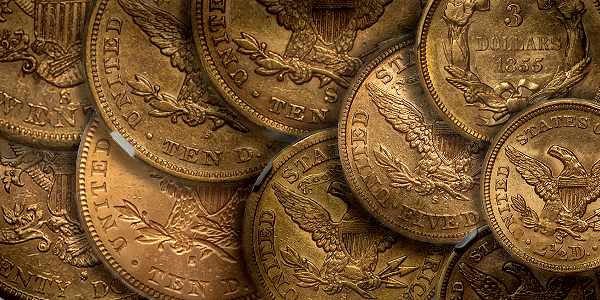 San Francisco
San Francisco
The San Francisco Mint was built after vast stores of gold were discovered in the California hills in the late 1840s.
Initial shipments of gold were sent by boat from California to the isthmus of Panama and then overland to ships on in the Atlantic, which would then carry the freight east to New York and Philadelphia. The vast expanse and the inherent danger of the trip made this an expensive proposition.
To answer the immediate need for coins, a number of private mints began to operate in the area. Ultimately, the military governor of California and the Treasury Secretary convinced the U.S. Congress to act.
In 1854, the San Francisco Mint opened in a tiny, cramped facility. It expanded in size and within two decades became one of the world’s most technologically-advanced coin factories.
Today, the San Francisco Mint strikes bullion coins, numismatic coins, and annual Proof sets.
Denver
The 1858 gold rush in the Colorado Rockies led to the creation of the city of Denver. In 1862, Congress approved a branch mint there, but an assay office was opened instead. In 1895 this facility was converted into a mint, but it wasn’t until 1906 that the Denver Mint would strike its first coins.
Today, the Denver Mint strikes circulating coins for the western United States, as well as numismatic coins for collectors.
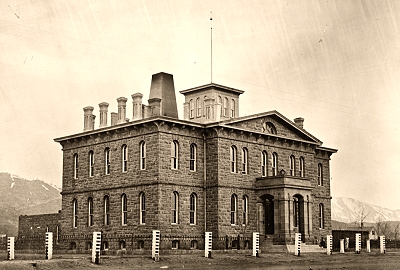
Carson City
In 1859 the famous Comstock Lode was discovered in Nevada. The discovery was the largest deposit of silver ever found in the U.S. This discovery led Congress to authorize yet another branch mint and in 1870, the Carson City Mint opened.
Carson City’s history is one of intrigue and mystery and it’s most known for its output of silver dollars. In 1893, with the decline in silver mining in the region, the Carson City Mint ended minting operations. It continued on as an assay office until 1933.
Coins struck with the “CC” mintmark are very popular with collectors, especially silver dollars.
Fort Knox and West Point
With the growing demand for silver and gold needed for coinage in the 20th century, a secure facility was needed to store all that bullion, leading in 1936 to the opening of the Fort Knox Depository in Kentucky to store the nation’s gold.
In 1938 the West Point Bullion Depository opened in New York State to store silver bullion, and from 1973 to 1986 it made pennies to alleviate the production at other mints.
Since 1988, West Point has had official status as a mint and produces silver and gold bullion and collector coins. It is also the second-largest gold depository after Fort Knox.
Today the United States Mint issues the largest variety of coins it has ever produced in terms of different coin programs as well as different metals, striking coins in zinc, copper-nickel, silver, gold, platinum, and palladium.




